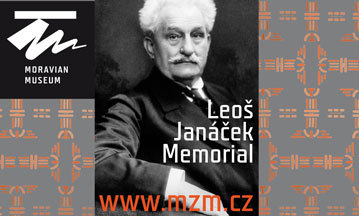The spring concert by the Diversa Quartet offered works by purely Czech composers for the first time in a long time. The event, held on the evening of Monday, 7 April at the Villa Löw-Beer, was subtitled Tempus est iocundum after a love song from the Carmina Burana manuscript. It was the song's exuberance that inspired the dramaturgy of the concert, which was accompanied by an ensemble made up of Barbara Tolarová (1st violin), Jan Bělohlávek (2nd violin), David Křivský (viola) and Iva Wiesnerová (cello).
String Quartet No. 3 by Jan Kapr (1914-1988) was written in the mid-1950s, when the composer, in addition to this work, was also working on Love Songs for baritone and piano and a Concerto for violin and orchestra. The work was first performed by the Smetana Quartet during the Prague Spring Festival in 1957. Originally it was to be a reworking of String Quartet No. 2, but in the end a completely new composition was created, which carries and adopts certain themes of this older composition. In the lively and colourful opening of the work, Jan Kapr plays with the alternation of voices, switching the main line between instruments, and also with passages conducted in unison. It was the unison between the instruments that represented the critical moments, in which there were occasional intonational inconsistencies. It should be noted, however, that the author was not afraid to use interesting combinations, such as the high first violin with cello in the first movement, the difficulty of which leads to pitfalls like this. The agility and verve of the individual parts of the piece were helped along by short notes and subtly incorporated movement (rhythmics), which the quartet handled excellently. The piece had momentum, drive and the desired energy, and violinist Barbara Tolarová and cellist Iva Wiesnerová deserve admiration for their solos, which made the individual melodic lines sing.
The event saw the world première of String Quartet No. 4, Op. 26 by Brno composer Radim Bednařík (*1979), which serves as a bridge between the first and last compositions. String Quartet is thus a deliberately one-movement affair - a kind of intermezzo. "I was also inspired by the very different life stories and poetics of the two authors' compositions, as well as by the social atmosphere, personal life stages and musical development, knowing where change is occurring, or is bound to occur soon." This is how Radim Bednařík described everything in his author's commentary. The work initially begins very unobtrusively: delays on long notes (also with the flageolet or harmonic), small melodic motifs spiced with pizzicato, from which emerges the solo viola (David Křivský). The course of the piece is dominated by concentration, inwardness and a very intimate atmosphere, through which permeates the ticking motif - a pulsation that gives the piece an inner tension. Although it was the shortest composition of the evening, it was very interesting as a listener to observe the different perception of time and the effect of the intrinsic character that Diversa Quartet managed to portray.
The concert closed with String Quartet No. 2 in C, Op. 26, by Osvald Chlubna (1893-1971), who studied in Leoš Janáček's master class in the 1920s. Janáček undoubtedly influenced the work of Osvald Chlubna, such as when Chlubna instrumented the second version of Janáček's first opera Šárka, after which he drew on the composer's notes to complete the symphony Dunaj (The Danube) and, as a follower, taught Janáček's grasp of music theory at the Brno Conservatory. In String Quartet No. 2 in C, especially in the third movement, we can also hear several Janáček elements, such as the ostinato time signature or the melody running over the tremolo of the other instruments. The work was first performed in 1929 by the Moravian Quartet in a radio matinee. The concert première took place a year later at a regular concert of the Moravian Composers' Club. However, Chlubna revised the quartet in 1957, resulting in the final version of the composition. Although the composition was published in the Czech Music Fund edition (1960), it contained errors, which were corrected several decades later and the entire composition was edited by musicologist and specialist on Chlubna's life and work Martin Pašek. The Diversa Quartet's staging was awash with broad, colourful and full tones, especially in the cello part, which emphasised the dense texture of the work. Once again, the skills of violinist Barbara Tolarová came to the fore, as she did an excellent job with the tricky parts.
The Diversa Quartet chamber concert served up a wide variety of string quartets by Brno composers, with both the dramaturgy and the performances of the players paying tribute to Brno's compositional tradition.
Programme:
Jan Kapr – String Quartet No. 3 (1955)
Radim Bednařík – String Quartet No. 4, Op. 26 (2025) première
Osvald Chlubna – String Quartet No. 2 in C, Op. 26 (1928/1957)
Diversa Quartet
Barbara Tolarová – 1st violin
Jan Bělohlávek – 2nd violin
David Křivský – viola
Iva Wiesnerová – cello
Monday, 7 April 2025 at 7:00 p.m., Villa Löw-Beer

































No comment added yet..